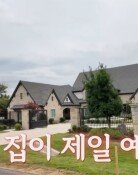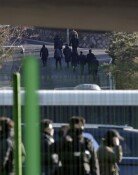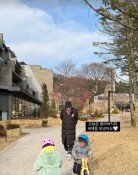Christmas tree-shaped tower Aegibong with the light off
Christmas tree-shaped tower Aegibong with the light off
Posted December. 29, 2014 20:01,
During the Chinese invasion of Korea in the 17th Century, female courtesan named Aegi was forced to separate from her lover, the governor of Pyongyang City, when evacuating. She settled in the Gimpo area and climbed up to a peak every day, pining for the governor, whom China had captured and taken north. As the woman died of disease there, villagers buried her near the peak as was her dying wish. Former President Park Chung-hee visited the front lines of the North-South Korea border in 1966 and heard the story. He changed the name of the ssukgatmeoribong peak or highland 154 to Aegibong peak and set up a monument for her. Aegibong Peak, which is a Christmas tree-shaped tower, is located in Gimpo, Gyeonggi Province.
At 6:30 p.m. on Dec. 21, 2010, Aegibong tower lights came on again. The Christmas lights, which had been suspended in an agreement of high-ranking military talks in 2004, turned on after six years. It had been seen as propaganda against the officially atheist North, and the lights had been taken down while inter-Korean relations thawed. The 2010 lighting was retaliation against North Koreas sudden attack on Yeonpyeong Island. North Korea said before the lights came on in Aegibong peak that it was an anti-communist psychological strategy, and threatened to aim and fire shots against it. That evening at the presidential mansion, a banquet presided over by then-President Lee Myung-bak was held. Immediately before the event, Lee and Defense Minister Kim Kwan-jin were discussing this issue. They called Prime Minister Kim Hwang-sik to hear his opinion and Kim said, If we dont hold the event we have announced due to threats from the North, they might underestimate us. The prime minister said he was relieved after the lights came on and saw a memo saying "situation normal was delivered to the president."
The 18 meter-tall Aegibong tower was first put up in 1971. The lights were flamboyant enough to be visible from the North Korean border city of Kaesong, which is 20 or 30 kilometers away from the site, having a strong effect in anti-North Korea psychological propaganda. The Christian Council of Korea planned to raise a Christmas tree on the former site of Aegibong tower this year, which was not carried out the plan due to objections from residents. The Aegibong tower did not have lights in 2011, when Kim Jong Il died, and in 2013, when Jang Song Taek was executed.
When former Minister of Culture, Sports, and Tourism Kim Seong-jae met with Kim Yang Gon, director of the North`s United Front Department in charge of South Korean affairs, he mentioned the Aegibong tower, suggesting that both Koreas resume dialogue as circumstances have changed. The North Korean official said he was of the same mind. Although it is not pleasant to see the dark Aegibong peak, I hope it could serve as a momentum to improve inter-Korean relations and to reunite the separated families.







